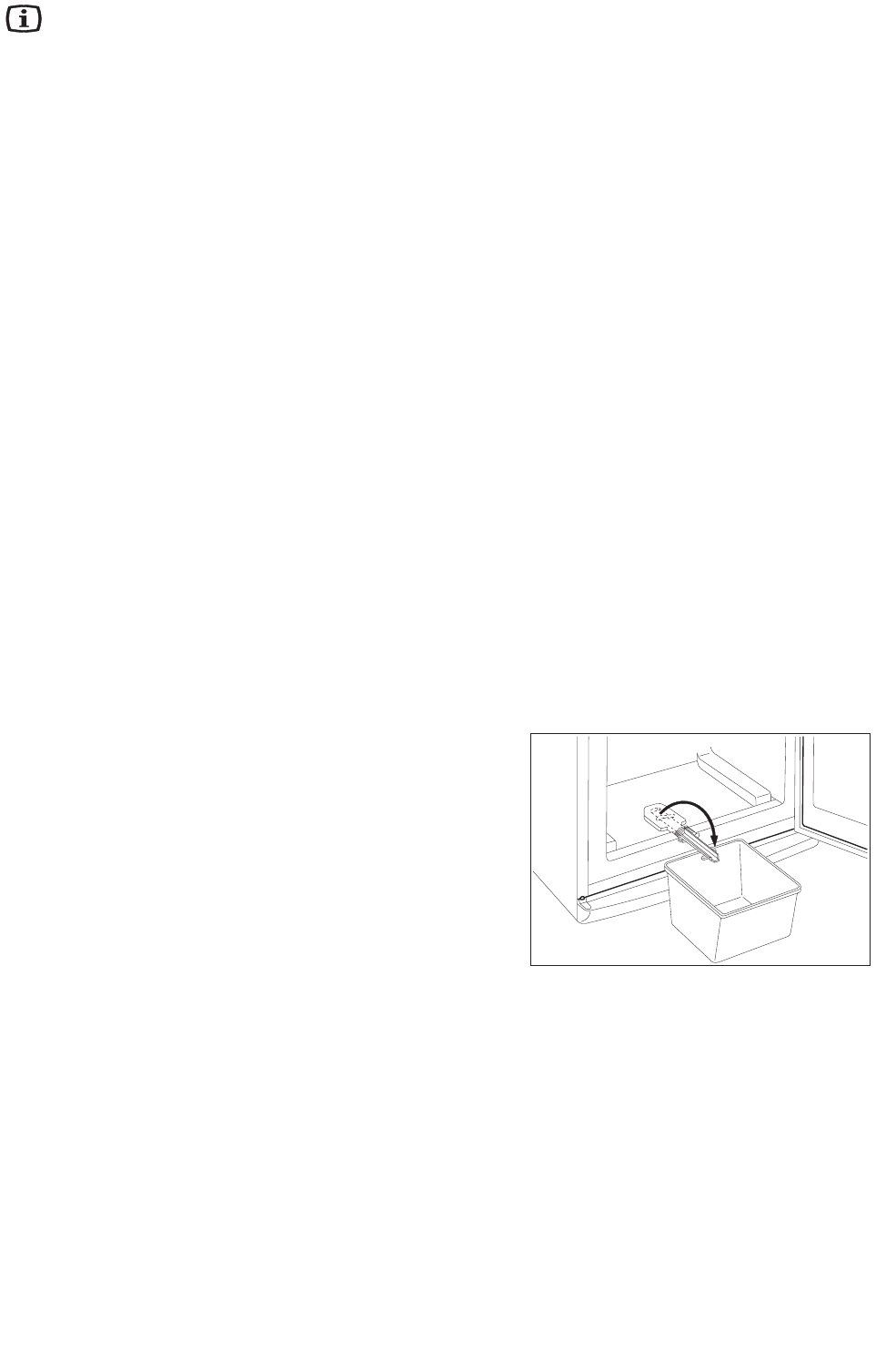
10
In case of increased demand e.g. during
heatwaves, the refrigerator temporarily happens
to operate constantly - during this the automatic
defrosting does not work.
Remaining small ice and frost stains on back plate of
the refrigerator after defrosting period is not abnormal.
The freezer can not be equipped with automatic
defrosting set since the deep-frozen and frozen foods
do not endure melting temperature.
When small frost and ice occurs scrape off and
remove frost and ice coating with the supplied plastic
scraper.
When ice coating is so thick that it cannot be removed
with the plastic scraper, the cooling gill have to be
defrosted. Frequency of defrosting depends on usage
(generally 2-3 times a year).
Take the frozen foods out of the appliance, and put
them into a basket lined with paper or cloth. Store
them in a possibly cool place or replace them into
another refrigerator.
Pull out the mains plug from the mains socket, so both
parts of the appliance are out of operation.
Open the doors of both parts of the appliance and
clean the refrigerator according to 'Regular cleaning'.
Maintain and clean the freezer as following:
Sweep off the melting water with a cloth or sponge in
direction of sides of the cooling plates. The melting
water swept down gathers in the outlet channel
practically formed in the bottom of the appliance and
can be removed according to figure.
Put an adequately high bowl or dish under the outlet.
The bowl in figure is not a piece of accessories to the
appliance!
Wipe the surfaces after defrosting and leading the
water out.
Put the mains plug into the mains socket and put
foods taken out back to their places.
It is recommended to operate the appliance at the
highest position of the thermostatic control for some
hours so that it can reach the sufficient storing
temperature as soon as possible.


















